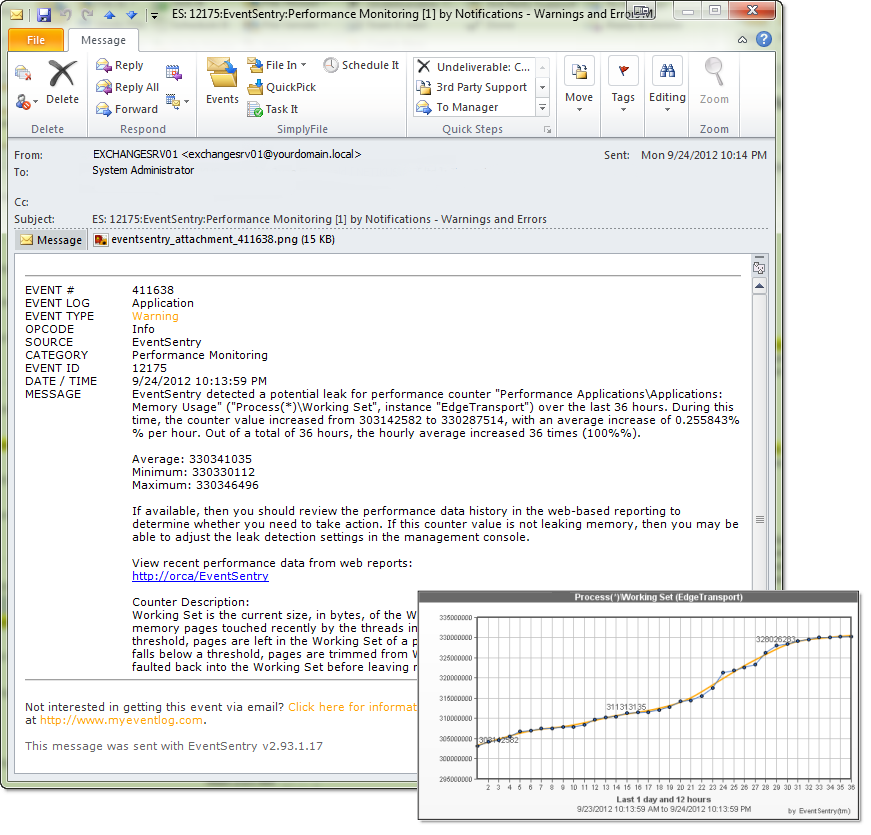Our latest patch for EventSentry v3.2 (v3.2.1.30) requires some additional information in addition to the release notes.
Heartbeat Monitoring (Agent Status)
By default, the EventSentry Heartbeat Monitor ensures that all remote agents are running by querying the status of the remote “EventSentry” service. While is an accurate way to ensure the remote agent is running, the Microsoft RPC mechanism isn’t very efficient when connecting to remote hosts across a slow (WAN) link, and concurrently checking the service status of 100+ hosts at the same time can on occasion also cause issues. In these situations, the heartbeat agent may not be able to monitor all hosts in the configured monitoring interval. Furthermore, querying the remote status of a service requires that the EventSentry Heartbeat Agent run under a domain account, otherwise the dreaded “Access Denied” error appears on the heartbeat status page in the web reports.
To address these issues for larger EventSentry deployments (500+ hosts) and deployments where the remote agents are connected through a slower WAN link, we have added the ability to query the remote agent status through the EventSentry database where the remote agents periodically check in. This check is enabled by default for new installations, but existing installations will need to make a database permission change in order to give the heartbeat agent permission to query the agent status. More information can be found here.
In the next release of EventSentry (v3.3), this functionality will be configurable, and the heartbeat agent will also be able to determine the current agent status by communicating directly with the collector service (when enabled) for even better accuracy. The Heartbeat Monitor will always attempt to revert back to the legacy method of checking the service status directly if it cannot obtain the status through other means.
Service Monitoring: Configuration Changes
EventSentry distinguishes between three types of service changes: Status changes (e.g. Running to Stopped), service configuration changes (e.g. changes to the startup type) and services being added or removed. Up until release 3.2.1.22, all status changes and service configuration changes were logged with the same event severity, which we didn’t think was very fitting since the status change of a service is very different to a change of the service itself. As such, starting with 3.2.1.30, only service status changes will be logged under the severity configured under “Monitor Service Status Changes” category. All other service changes will be logged under the severity configured under “Monitor Service Addition / Removal” category.
Management Console: Quicktools
The EventSentry QuickTools allow you to run an application/script against a server or workstation in your EventSentry configuration. EventSentry includes a few default QuickTools entries, such as “Reboot”, “Remote Desktop” and others. Starting with the latest release we added a new “Hide” option, which will not show the executed application on the desktop. This will be useful for integrating our upcoming VNC wrapper scripts (Blog article coming soon), which will allow you to install & launch a (Tiger)VNC client directly from the EventSentry management console.
EventSentry Light 3.2
Starting with this release, EventSentry Light v3.2 will also be available. We have good news for all EventSentry Light users: We have increased the number of full hosts you can remotely manage to 5, and also increased the number of network devices you can monitor to 5. As such you can now monitor up to 10 hosts with EventSentry Light completely for free.
